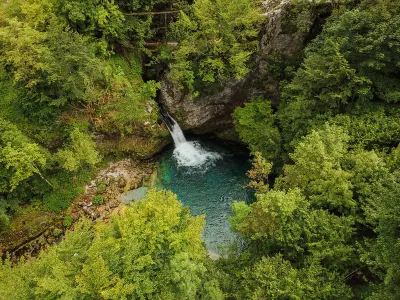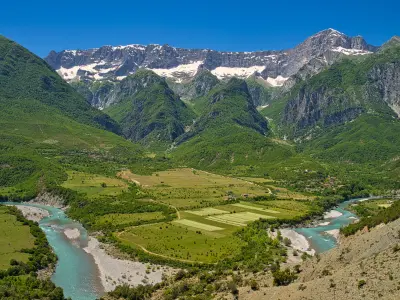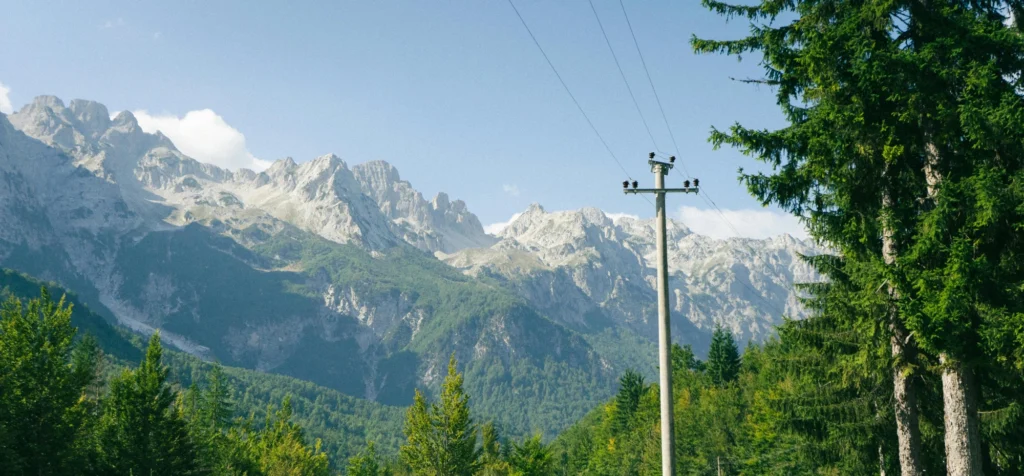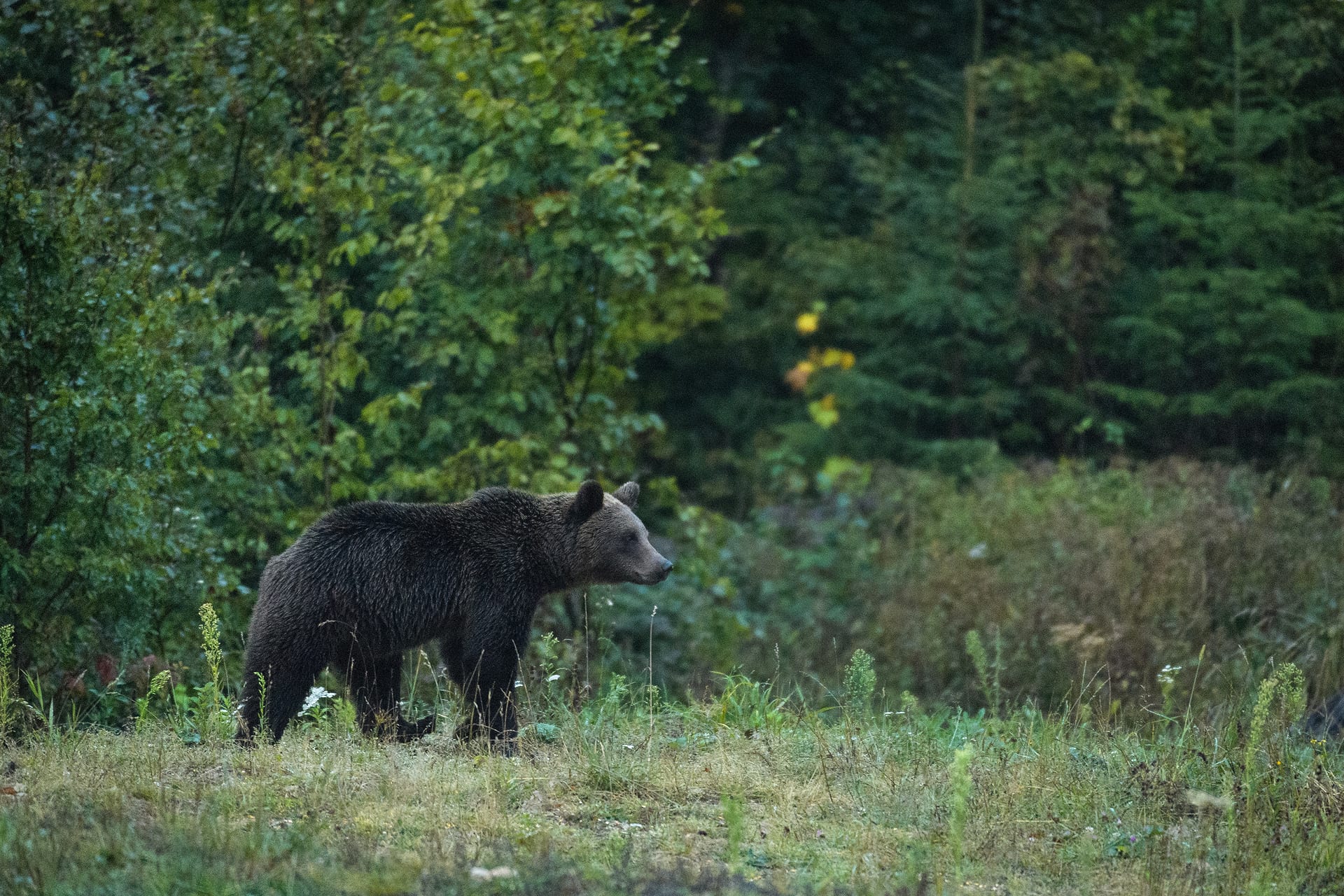Albania‘s wild landscapes are among Europe‘s last great frontiers—rivers still run free, lynx move through forested mountains and wetlands echo with the calls of rare birds. While its natural beauty is no longer a secret, Albania remains refreshingly untamed and deeply tied to biodiversity.
From the Vjosa River, now Europe’s first wild river national park, to ancient mountain trails and biodiverse coastlines, these are the best places to visit in Albania for travellers seeking something beyond a typical itinerary. Whether protected wetlands, ancient mountain landscapes or lesser-known national parks draw you in, each of these five destinations offers a rare blend of Albania’s biodiversity, culture and conservation.
How Albania’s Nature is Shaping a New Kind of Travel
Albania has long been one of Europe’s best-kept secrets. Its towering mountains, untamed rivers and biodiverse coastlines have flourished with little international attention. However, it is well and truly on the map in the conservation world thanks to milestones like the creation of Vjosa Wild River National Park. Purpose-led travellers visit its wild landscapes to experience interconnected ecosystems where wildlife thrives and cultural traditions remain deeply linked to the land. Albania offers a rare opportunity to experience Europe’s unfragmented wilderness.


Albania’s National Parks
Vjosa Wild River National Park
Declared in 2023, Vjosa Wild River National Park is a landmark achievement in European conservation. Spanning nearly 13,000 hectares of river channels, floodplains and tributaries, it protects one of Europe’s only remaining undammed river systems. It flows 270 km through southern Albania, from the Pindus Mountains to the Adriatic Sea, supporting over 1,100 species like otters, Egyptian vultures and endangered fish such as the Albanian roach.
A decade of tireless advocacy by conservationists, local communities, scientists and international partners including Patagonia and IUCN has resulted in the Vjosa’s protected status. It is the first national park in Europe dedicated to preserving an entire wild river system.
Visitors can hike its verdant banks, raft on crystal-clear rapids and meet the people safeguarding its vital and fragile ecosystems. Our upcoming hosted journey to the Vjosa Valley will offer a rare insight into this living river corridor, ideal for travellers who want to engage directly with conservation efforts, learn from local stewards and experience the living pulse of Europe’s last wild river.
Theth National Park
Tucked in the northern Albanian Alps, Theth National Park has pristine glacial valleys, traditional stone villages and dramatic peaks. The park’s rugged scenery includes the iconic Theth to Valbona Pass hike, a breathtaking route traversing river canyons, alpine meadows and ancient beech forests, with golden eagles overhead and wildflowers underfoot. In spring and summer, the highlands come alive with botanical richness, including medicinal plants.
The region’s cultural sites offer a window into highland traditions. Stone lock-in towers (kulla) and 19th-century mountain churches tell stories of resilience, blood feuds, and spiritual traditions that shaped life in this isolated region for centuries. Family-run guesthouses are a way visitors can experience hospitality rooted in ancient customs, where human life has long intertwined with nature.
Butrint National Park
A short drive from Saranda will reveal a UNESCO World Heritage Site near the Greek border, Butrint National Park. Here, visitors can experience archaeological ruins amid thriving wetland ecosystems. Butrint is a rare place in the Mediterranean where archaeological treasures interwoven with wild landscapes are protected.
Beyond its Roman theatres, Venetian towers and Byzantine baptisteries, Butrint shelters a rich variety of wetlands, lakes and salt marshes that pulse with life. Its reed beds and lagoons are home to over 1,200 species, 17 per cent of all known in Albania. Birdlife abounds across Butrint Bay and the Vrina Marshes in the form of herons, curlews and seasonal flocks of flamingos.
Albania has a layered past, and its biodiversity is part of that story. This cultural and ecological corridor is ideal for travellers seeking nature and heritage in one.
Divjakë-Karavasta National Park
Along Albania’s Adriatic coast lies Divjakë-Karavasta National Park, the country’s largest wetland reserve and one of its most important ecological strongholds. The vast Karavasta Lagoon at its heart is a Ramsar site of international importance. It shelters rare species like the Dalmatian pelican (where 5 per cent of the world’s population nests).
Over 200 other bird species also live in this park’s dense coastal pine forests, shifting sand dunes and brackish wetlands. Migratory birds rest along the Adriatic Flyway, connecting Divjakë-Karavasta to an ancient, continent-spanning ecological network. Other species in the park’s vibrant ecosystems include jackals, otters and roe deer.
Visitors can join local ornithologists on birdwatching tours, explore forest trails by bike and take boat rides through the lagoon. Eco-conscious initiatives are growing, but visitors should choose sustainable, locally guided experiences to help reinforce the delicate balance between tourism and conservation. This compelling destination teaches the importance of wetlands for global biodiversity and climate resilience.


Karaburun-Sazan Marine Park
Offshore from Vlorë, Karaburun-Sazan Marine Park is Albania’s only marine protected area. Here, mountains plunge into the Adriatic Sea, which is teeming with life. This park spans 12,000 hectares and safeguards vital marine ecosystems, from Posidonia seagrass beds to coral reefs and submerged caves.
Visitors will experience a dynamic marine habitat housing an impressive array of species, including dolphins, loggerhead turtles, monk seals and a rich diversity of fish. Seagrass meadows help mitigate climate change while providing nursery grounds for marine life, acting as crucial carbon sinks.
On land, the limestone cliffs of the Karaburun Peninsula shelter secluded coves and ancient sailor inscriptions at Grama Bay, and the nearby island of Sazan reveals Cold War relics and stories of Albania’s modern history.
Travellers can snorkel over WWII-era shipwrecks, dive into colourful reef systems and join conservation-focused boat tours led by marine biologists. Citizen science programmes allow visitors to contribute to marine species monitoring, supporting efforts to protect this fragile coastal environment.
Exploring One of Europe's Last Wild Frontiers
Albania stands apart in a world where true wilderness is increasingly rare. These five destinations, where ancient forests, wild rivers and rugged coastlines remain largely untouched, offer a glimpse into what much of Europe once looked like.
As Albania’s conservation story evolves, shaped by communities and scientists protecting its natural treasures, visitors can connect with, understand and contribute to its biodiversity. Its ecosystems thrive under protection and community participation, and travel has become a force for renewal.
Interested in discovering Albania’s wild side?
Journeys with Purpose offers curated opportunities to explore Albania’s most biodiverse landscapes and protected areas, from wild rivers to alpine peaks. If you’re curious about our upcoming hosted journey through the Vjosa Valley or want to stay connected to the people protecting this extraordinary region, get in touch with our expert travel specialists today on +44 20 8044 9538 or at connectjourneyswithpurpose.org to experience the best places to visit in Albania.
DIG A LITTLE DEEPER
Contribute to Positive Impact on a Hosted Journey.
Connect with Impact Partners around the world during a Private Experience.




